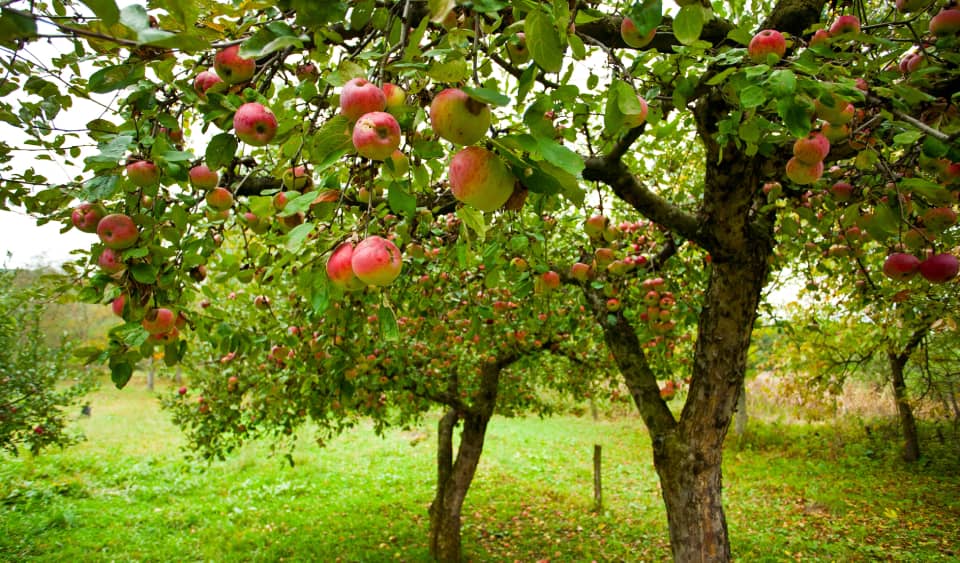
The Ultimate Guide to
Fruit Trees That Grow Well in Oklahoma
Oklahoma’s weather can be unpredictable, but that doesn’t mean you can’t grow your own fruit trees. From hot, dry summers to the occasional late spring frost, choosing the right trees makes all the difference. The good news? Plenty of fruit trees thrive here with the right care.
Whether you’re a beginner looking for an easy-to-grow tree or someone interested in native and wild fruit varieties, this guide has you covered. You’ll find the best options for Oklahoma’s climate, practical tips for success, and what to expect as your trees grow.
Understanding Oklahoma’s Climate for Fruit Trees
Oklahoma’s climate is a mix of hot summers, cold winters, and unpredictable weather, making it important to choose hardy fruit trees that can handle it all. The state falls between USDA Hardiness Zones 6-8, meaning winters can get chilly while summers bring scorching heat.
Late frosts can be a challenge, especially for early-blooming trees like peaches and apricots. To minimize frost damage, plant fruit trees on slightly elevated areas where cold air can drain away instead of settling in low spots. Well-drained soil is also key—fruit trees don’t like “wet feet.” If you’re working with heavy clay, consider raised beds or soil amendments to improve drainage.
Drought tolerance is another factor. Summers in Oklahoma can be dry, so choosing trees that can handle periodic drought conditions will make maintenance easier. Deep watering and mulch help retain moisture, keeping your trees happy even in the hottest months.
What Fruit Trees Grow Well in Oklahoma?
Here are some of the best fruit trees that thrive in Oklahoma’s climate:
-
Apple Trees:
(Honeycrisp, Red Delicious, Granny Smith, Gala)
-
Pear Trees:
(Bartlett, Kieffer, Anjou, Bosc)
-
Plum Trees:
(Damson, Methley, Japanese Plum)
-
Peach Trees:
(Redhaven, Reliance, Sunhaven, White Peach)
-
Cherry Trees:
(Montmorency, Bing, Van)
-
Fig Trees:
(Brown Turkey, Chicago Hardy)
-
Apricot Trees:
(Royal, Tropic Gold, Blenheim)
-
Mulberry Trees:
(Red Mulberry, White Mulberry)
-
Persimmon Trees:
(American Persimmon, Fuyu Persimmon)
-
Pecan Trees:
(Native Oklahoma tree, produces nuts instead of fruit but often included in orchards)
Each of these trees can handle Oklahoma’s unique weather patterns while producing delicious fruit. Now, let’s take a closer look at each one.
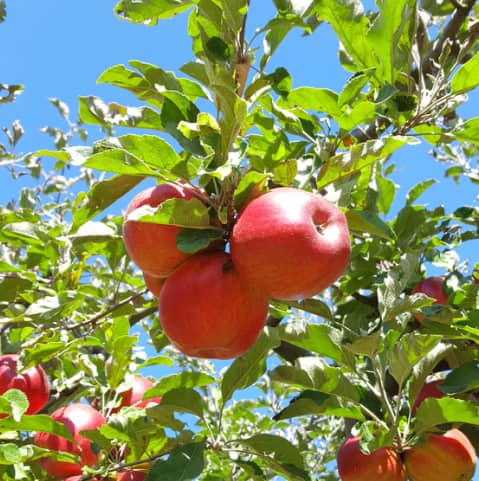
Apple Trees
Apple trees are one of the most reliable tree fruits for Oklahoma, and they come in many apple varieties suited to the climate. As apples bloom in early spring, it's important to plant them in a spot with good air circulation to reduce frost damage.
Popular choices like Honeycrisp, Red Delicious, Granny Smith, and Gala all do well. They can withstand cold winters, and many varieties are drought-tolerant once established.
Apples prefer full sun and well-drained soil, and they’ll need another variety nearby for pollination unless you choose a self-pollinating type. Spring frosts can be a concern, so planting them in a spot with good air circulation helps protect early blossoms. With proper care, you’ll enjoy fresh apples from late summer through fall—perfect for baking an old-fashioned apple pie with homegrown fruit.
Pear Trees
Pear trees are low-maintenance and highly adaptable, making them a great option for beginner growers. Varieties like Bartlett, Kieffer, Anjou, and Bosc are all excellent choices. They handle both heat and cold well, and they’re naturally resistant to many pests and diseases.
Unlike apples, many pear trees are self-pollinating, though having a second tree nearby can increase fruit production. These trees prefer deep, well-drained soil and benefit from occasional pruning to keep their shape and improve airflow. Once they’re established, they need very little attention, making them one of the easiest fruit trees to grow in Oklahoma.
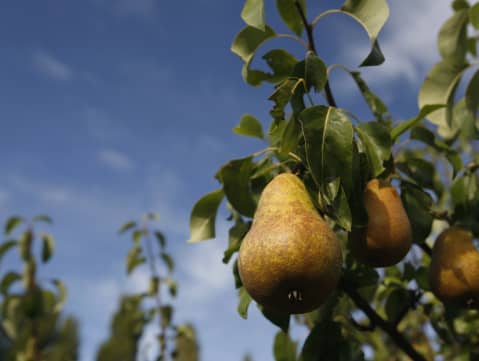
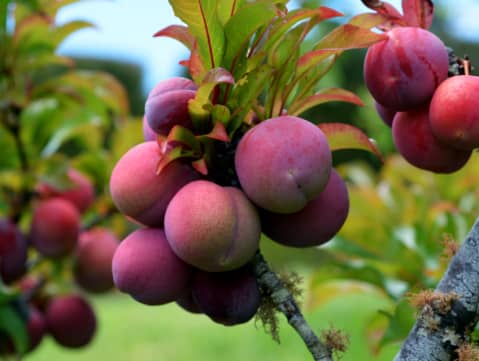
Plum Trees
Plums are a hardy and fast-growing option for Oklahoma gardens, but some varieties may be susceptible to bacterial leaf spot, which can affect fruit quality if not managed. Both European and Japanese plum varieties do well, though Japanese plums tend to bloom earlier, making them more susceptible to late frosts. Recommended varieties include Damson, Methley, and Ozark Premier.
Plum trees love full sun and well-drained soil. They produce an abundance of fruit with minimal effort, but they do need a pollination partner unless you choose a self-fertile variety. Once ripe, plums are perfect for fresh eating, jams, and even drying for homemade prunes.
Peach Trees
Peaches thrive in Oklahoma, but they do require a little extra care. Popular varieties like Redhaven, Reliance, and Sunhaven can withstand cold winters, though a late frost can sometimes damage early blossoms.
Peach trees grow quickly and produce fruit within a few years, but for successful peach production, they need annual pruning to promote strong growth and higher yields. They also require regular watering, especially during fruit development. Despite the extra work, the reward of juicy, homegrown peaches makes it worth the effort.
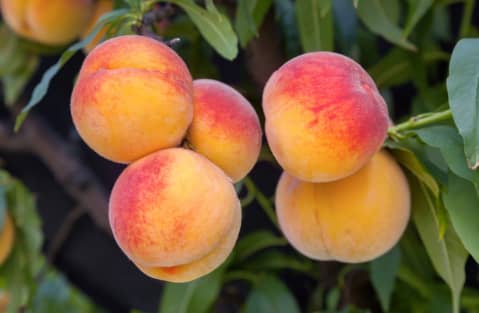
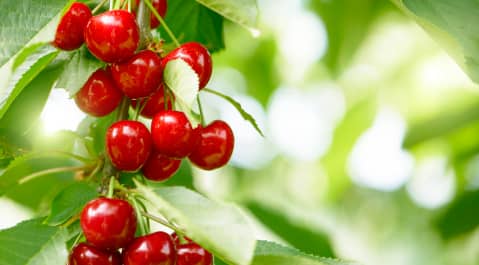
Cherry Trees
Sweet and sour cherries both grow in Oklahoma, though sour varieties like Montmorency tend to be more reliable. Sweet cherries, such as Bing and Van, need well-drained soil and proper winter chilling to set fruit.
Cherry trees are self-pollinating or require a second variety, depending on the type. They need protection from birds, which love to snack on ripe cherries. Netting or planting near other fruit trees can help distract them from your harvest.
Fig Trees
Fig trees are surprisingly easy to grow in Oklahoma. Hardy varieties like Brown Turkey and Chicago Hardy can survive colder winters and bounce back even after freezing temperatures.
Figs love warm summers, and their deep roots help them withstand drought. They grow well in pots or directly in the ground and require little maintenance beyond occasional pruning. With proper care, they’ll reward you with delicious, naturally sweet fruit.
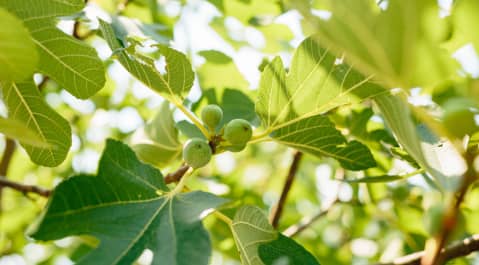
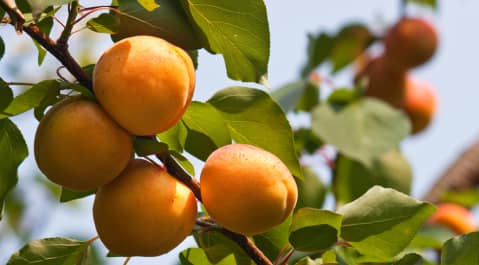
Apricot Trees
Apricot trees are beautiful and productive, but they can be a little tricky in Oklahoma due to their early blooming nature. Late spring frosts can damage flowers, so planting them in a sheltered spot is best. Recommended varieties include Royal, Tropic Gold, and Blenheim.
If you’re up for the challenge, apricots reward growers with incredibly flavorful fruit. They prefer well-drained soil and benefit from occasional pruning to maintain their shape and encourage strong growth.
Mulberry Trees
Mulberry trees grow almost anywhere and require very little maintenance. The Red Mulberry is native to Oklahoma and produces sweet, dark purple berries that are loved by birds and humans alike.
These trees are drought-tolerant, fast-growing, and practically indestructible. If you want an easy fruit tree that thrives with minimal care, mulberries are a fantastic choice. Just be mindful that the berries can be messy, so plant them away from sidewalks or patios.
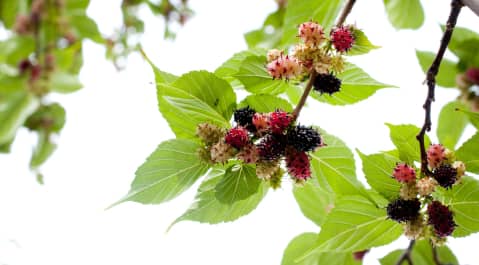
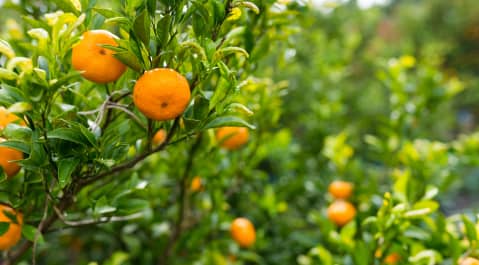
Persimmon Trees
Persimmon trees are another native Oklahoma fruit tree that thrives in local conditions. The American Persimmon (Diospyros virginiana) is well-adapted to the climate, while the Fuyu Persimmon is a great non-astringent variety.
Persimmons are cold-hardy, drought-tolerant, and easy to grow. They require very little care beyond occasional watering in dry spells. The fruit ripens in the fall and is perfect for fresh eating, baking, or drying.
Pecan Trees
While pecans produce nuts rather than traditional fruit, they are a staple tree in Oklahoma. Native pecans grow naturally throughout the state and thrive in local soil and climate conditions.
Pecan trees need space to grow, as they can become quite large. They require pollination from a second tree and can take several years to start producing. But once they do, they’ll reward you with a bountiful harvest of delicious pecans year after year.
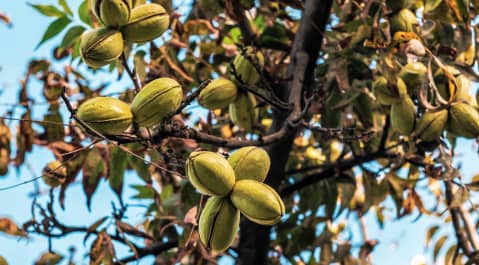
What is the Easiest Fruit Tree to Grow in Oklahoma?
The easiest fruit tree to grow in Oklahoma is the mulberry tree. It thrives in a variety of soil conditions, requires little maintenance, and produces an abundance of sweet, nutritious berries year after year.
Mulberry trees are tough, fast-growing, and incredibly low-maintenance, making them perfect for beginner gardeners or anyone who wants fruit without the hassle.
Here’s why they’re so easy to grow:
- Drought-Tolerant – Once established, they rarely need extra watering.
- Cold-Hardy – They can handle Oklahoma’s winter chills and hot summers.
- No Special Soil Needed – Mulberries grow in almost any soil type, including poor or rocky soil.
- Self-Pollinating – No need to plant more than one tree; a single mulberry tree can produce fruit on its own.
- Pest and Disease Resistant – Unlike many fruit trees, mulberries don’t require regular spraying or treatments.
Another easy option is the fig tree (especially the Brown Turkey variety). It grows well in Oklahoma, needs little care, and bounces back even if winter freezes it to the ground. If you want effortless fruit production, mulberries and figs are the way to go.
Native Oklahoma Fruit Trees
Oklahoma has several native fruit trees that thrive with little care, making them perfect for a low-maintenance orchard. If you want trees that naturally handle the local climate, here are some great options:
- American Persimmon – Produces small, orange fruit that’s astringent until fully ripe, then sweet and ideal for fresh eating or baking.
- Red Mulberry – Fast-growing and hardy, this tree yields sweet, blackberry-like fruit loved by people and wildlife.
- Chickasaw Plum – A small, drought-tolerant tree with tart red plums, often used for jellies and preserves.
- Pawpaw – Known as the "Oklahoma banana," this tree grows in shady, moist areas and produces soft, tropical-flavored fruit.
- Black Cherry – A tall tree with tart, dark cherries that work well for jams and attract wildlife.
Wild Fruit Trees in Oklahoma
Oklahoma has a surprising number of wild fruit trees, and many can be found in forests, open fields, and near water sources. Here are some common wild fruit trees you might come across:
- Wild Plums – Small, tart fruits often found along fence lines and in open fields.
- Pawpaw Trees – Known as the "Oklahoma banana," pawpaws produce creamy, tropical-flavored fruit.
- Sandhill Grapes – Wild grapevines that grow near rivers and streams, producing small, tangy grapes.
- Black Cherries – Dark, tart cherries that grow on tall trees in wooded areas.
- Hackberry Trees – Produces small, edible berries with a crunchy seed inside, often enjoyed by birds.
If you're interested in finding wild fruit trees in Oklahoma, you don’t have to look far. Many of these trees grow naturally in a variety of landscapes across the state:
- Near rivers and streams – Many wild fruit trees, like pawpaws and sandhill grapes, thrive in moist soil.
- Along fence lines and roadsides – Wild plums and mulberries often grow in open spaces.
- Wooded areas and state parks – Black cherries and hackberries are commonly found in forests.

Tips for Successfully Growing Fruit Trees in Oklahoma
Growing fruit trees in Oklahoma can be rewarding, but success depends on proper care and planning. Here are some key tips to keep your trees healthy and productive:
-
Choose the right location – Pick a spot with full sun and good air circulation to protect against frost and disease. Avoid low-lying areas where cold air settles.
-
Prepare the soil – Most fruit trees prefer well-drained soil. If your soil is heavy clay, consider planting in raised beds or adding compost and sand for better drainage.
-
Water wisely – Young trees need regular watering, especially in hot summers. Once established, deep but infrequent watering helps develop strong roots.
-
Prune for health and shape – Pruning encourages better fruit production, prevents overcrowding, and helps trees withstand Oklahoma’s strong winds.
-
Watch for late frosts – Early bloomers like peaches and apricots may need protection if a late freeze threatens. Covering them overnight can help prevent damage.
-
Plant pollination partners – Some fruit trees, like apples and plums, need a second variety nearby for cross-pollination and fruit set.
-
Use mulch for moisture and protection – A layer of mulch around the base helps retain moisture, suppress weeds, and regulate soil temperature.
-
Protect against pests and diseases – Keep an eye out for common issues like fire blight, cedar-apple rust, and Japanese beetles. Proper spacing and airflow help prevent many problems naturally.
Conclusion
Oklahoma’s climate offers plenty of opportunities for growing fruit trees, whether you’re planting an orchard or adding a few trees to your yard. The best fruit trees for the state include apples, pears, plums, peaches, cherries, figs, apricots, mulberries, persimmons, and pecans—each with its own benefits and growing requirements.
For those looking for low-maintenance options, mulberries and figs are some of the easiest fruit trees to grow. Native fruit trees, like persimmons and Chickasaw plums, are naturally adapted to Oklahoma’s conditions and thrive with little effort. Wild fruit trees can also be found in forests, along rivers, and even in open fields.
By choosing the right trees, planting them in good soil with plenty of sun, and providing basic care, you can enjoy fresh, homegrown fruit season after season. Whether you’re a beginner or an experienced gardener, Oklahoma’s fruit-growing potential is well worth exploring.
Need help keeping your fruit trees healthy? Proper pruning and maintenance are key to long-term growth and fruit production. At Trees By Jake, we specialize in professional tree trimming and care to keep your trees strong, productive, and looking their best.
Contact us today for expert tree services in Tulsa!
Frequently Asked Questions
-
How long does it take for fruit trees to start producing in Oklahoma?
It depends on the type of tree. Some fruit trees, like peaches and plums, can start producing within 2-3 years, while others, such as apple and pear trees, may take 4-6 years. Pecan trees take even longer, often 6-10 years before they yield a full crop.
-
What is the best time to plant fruit trees in Oklahoma?
The best time to plant fruit trees in Oklahoma is late fall to early spring, before new growth starts. Dormant trees planted in late fall or early spring have a better chance to establish strong roots before summer heat arrives.
-
Can nut trees grow in Oklahoma?
Yes! Nut trees like pecans, black walnuts, and hickory thrive in Oklahoma. Pecans, a native tree, take years to mature but provide a lasting harvest once established.
-
Can you grow citrus trees in Oklahoma?
Citrus trees like lemons, oranges, and limes are not cold-hardy enough for Oklahoma’s winters. However, you can grow them in containers and bring them indoors during the colder months. Meyer lemons and Kumquats are popular options for container gardening.
-
Can you harvest wild grapes in Oklahoma?
Yes! Wild grapes, like sandhill grapes, grow near rivers, streams, and fence lines. They’re tart but great for grape juice, jelly, and wine. Harvest when completely ripe for the best flavor.
Contact Your
Tulsa Tree Service
TREES BY JAKE has been providing tree removal services in Tulsa for over a decade. Jake is a Tulsa Certified Arborist and we have a variety of equipment to safely and efficiently remove trees. Call or text us today for your free estimate at 918-500-9955 and don’t forget to check us out on Facebook, Instagram, and Twitter!